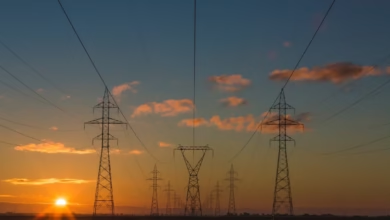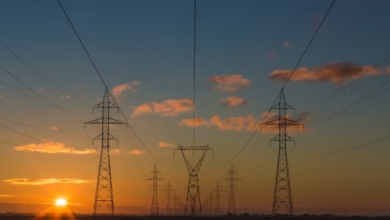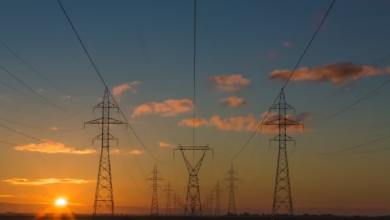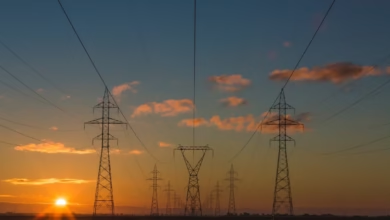Powering the Future: The Transition to Renewable Energy and Its Economic Implications

As the world grapples with the urgent need to combat climate change and reduce reliance on fossil fuels, the transition to renewable energy has become a focal point of global discussions. The rise of solar, wind, and hydrogen power marks a significant shift in how we harness energy, offering cleaner and more sustainable alternatives to traditional sources. Governments worldwide are stepping up their efforts to incentivize this transition, implementing policies that support the adoption of renewable technologies. However, this shift is not without its challenges, particularly in the realm of energy storage, which is crucial for managing the intermittent nature of renewable sources.
Additionally, the future of nuclear energy remains a pivotal aspect of the low-carbon landscape, while oil and gas companies are increasingly adapting their strategies to align with evolving energy demands. The proliferation of electric vehicles further underscores the push to decrease fossil fuel dependency, presenting both opportunities and challenges. Amid these changes, fluctuations in energy prices carry significant economic implications, influencing everything from consumer behavior to global markets. This article delves into these interconnected themes, exploring innovations in energy efficiency and their potential for cost savings as we navigate the complexities of a sustainable energy future.
- 1. **Harnessing the Power of Nature: Exploring Solar, Wind, and Hydrogen Energy Innovations**
- 2. **Government Initiatives: Incentives Driving the Shift to Clean Energy Solutions**
- 3. **Navigating the Energy Transition: Challenges and Innovations in Storage and Efficiency**
1. **Harnessing the Power of Nature: Exploring Solar, Wind, and Hydrogen Energy Innovations**
As the world increasingly turns its attention to sustainable energy sources, innovations in solar, wind, and hydrogen energy are at the forefront of this renewable revolution. Each of these energy modalities harnesses the power of nature in unique ways, advancing technology and efficiency to meet growing energy demands while reducing greenhouse gas emissions.
Solar energy has seen remarkable advancements, particularly in photovoltaic (PV) technology. Innovations such as bifacial solar panels, which capture sunlight from both sides, and solar tracking systems that optimize the angle of sunlight exposure are enhancing energy capture efficiency. Additionally, the development of perovskite solar cells promises to further improve energy conversion rates while reducing manufacturing costs. These innovations are making solar energy more accessible and affordable for both residential and commercial applications.
Wind energy is also experiencing a transformation through technological advancements. The deployment of larger, more efficient turbines—capable of generating power at lower wind speeds—has significantly increased the viability of wind farms in diverse geographic locations. Innovations in offshore wind technology, such as floating wind turbines, enable energy generation in deeper waters, unlocking vast new potential for harnessing wind power. Furthermore, digital solutions, including predictive maintenance and real-time monitoring, are optimizing operations and reducing downtime.
Hydrogen energy, often hailed as the fuel of the future, is gaining traction through innovations in production methods. Green hydrogen, produced via electrolysis powered by renewable energy sources, has the potential to decarbonize sectors that are difficult to electrify. Advances in electrolyzer efficiency and cost reduction are making green hydrogen more economically viable. Additionally, research into hydrogen storage and transport solutions is addressing logistical challenges, paving the way for a hydrogen economy that could play a crucial role in energy transition.
Together, these innovations in solar, wind, and hydrogen energy not only contribute to a cleaner energy landscape but also spur economic growth by creating new jobs and industries. As governments and private sectors invest in these renewable technologies, the potential for a sustainable energy future becomes increasingly attainable, emphasizing the importance of harnessing the power of nature to meet the needs of a growing global population.
2. **Government Initiatives: Incentives Driving the Shift to Clean Energy Solutions**
Governments around the world are increasingly recognizing the urgent need to transition from fossil fuels to clean energy solutions. To facilitate this shift, they are implementing a variety of initiatives and incentives aimed at promoting the adoption of renewable energy technologies. These measures often include financial incentives such as tax credits, grants, and subsidies designed to lower the cost of renewable energy projects. For instance, in the United States, the Investment Tax Credit (ITC) and the Production Tax Credit (PTC) have significantly boosted solar and wind energy development by providing substantial reductions in upfront costs.
In addition to financial incentives, governments are also establishing regulatory frameworks and policies that support clean energy. This includes setting ambitious renewable energy targets, mandating renewable portfolio standards (RPS), and investing in research and development to foster innovation in energy technologies. Countries like Germany have pioneered feed-in tariffs that guarantee fixed payments for energy produced from renewable sources, encouraging greater investment in solar and wind projects.
Internationally, collaborations such as the Paris Agreement have spurred countries to commit to reducing greenhouse gas emissions, further driving government initiatives towards sustainable energy solutions. Some governments are also focusing on public-private partnerships to leverage private investment in renewable infrastructure, which can amplify the impact of public funding.
Furthermore, the transition to clean energy is being supported through educational campaigns aimed at increasing public awareness and acceptance of renewable technologies. By promoting energy efficiency and conservation, governments are working to change consumer behavior, making the transition smoother and more effective.
As the global community grapples with climate change, these government initiatives are crucial in shaping a sustainable energy future. By providing the necessary support and incentives, governments are not only facilitating the growth of renewable energy but also contributing to job creation, energy security, and economic resilience in the face of an evolving energy landscape.
3. **Navigating the Energy Transition: Challenges and Innovations in Storage and Efficiency**
The transition to renewable energy sources like solar, wind, and hydrogen power presents significant challenges, particularly in the realms of energy storage and efficiency. As these renewable systems often generate power intermittently, effective storage solutions are crucial for ensuring a reliable energy supply. Traditional energy storage methods, such as pumped hydro and lead-acid batteries, are increasingly being supplemented by innovative technologies. Among these are lithium-ion batteries, which dominate the current market due to their high energy density and declining costs, and emerging alternatives like solid-state batteries and flow batteries, which promise greater longevity and safety.
However, the scalability and environmental impact of these storage technologies remain areas of active research. For instance, while lithium mining presents environmental concerns, new methods such as recycling used batteries could mitigate some of these impacts, contributing to a more sustainable energy ecosystem.
In parallel, improving energy efficiency is vital for maximizing the benefits of renewable sources. Innovations in energy-efficient technologies, such as smart grids and demand response systems, allow for better management of energy consumption. Smart meters and home automation systems enable consumers to track and adjust their energy use in real-time, leading to reduced waste and lower costs.
Moreover, advancements in building materials and designs, including passive solar design and energy-efficient HVAC systems, help decrease overall energy demand. These innovations not only support the integration of renewable energy but also contribute to significant cost savings for consumers and businesses alike.
Navigating the energy transition effectively requires a multi-faceted approach that embraces both storage solutions and efficiency improvements. As governments and industries invest in research and development, the potential for breakthroughs in these areas could pave the way for a more resilient and sustainable energy landscape.
In conclusion, the transition to renewable energy is not just an environmental imperative but also a multifaceted economic opportunity that is reshaping the global energy landscape. As we have explored, innovations in solar, wind, and hydrogen technologies are at the forefront of this shift, bolstered by proactive government incentives aimed at accelerating the adoption of clean energy solutions. However, the challenges surrounding energy storage and efficiency remain critical hurdles that must be addressed to fully harness the potential of renewable resources.
Moreover, the evolving role of nuclear energy presents a viable complement to renewables in achieving a low-carbon future, while traditional oil and gas companies are adapting to this new reality by diversifying their portfolios and investing in sustainable practices. The rise of electric vehicles further underscores the collective effort to reduce fossil fuel dependency, contributing to a cleaner transportation sector.
Finally, as energy prices fluctuate, the economic implications are significant, highlighting the need for innovative approaches to energy efficiency that can deliver cost savings for consumers and businesses alike. The path forward is undoubtedly complex, but with continued collaboration, investment, and innovation, a sustainable energy future is within reach, promising not only environmental benefits but also economic resilience and growth. As we move ahead, it is imperative to embrace these changes and foster a clean energy economy that meets the needs of both current and future generations.





